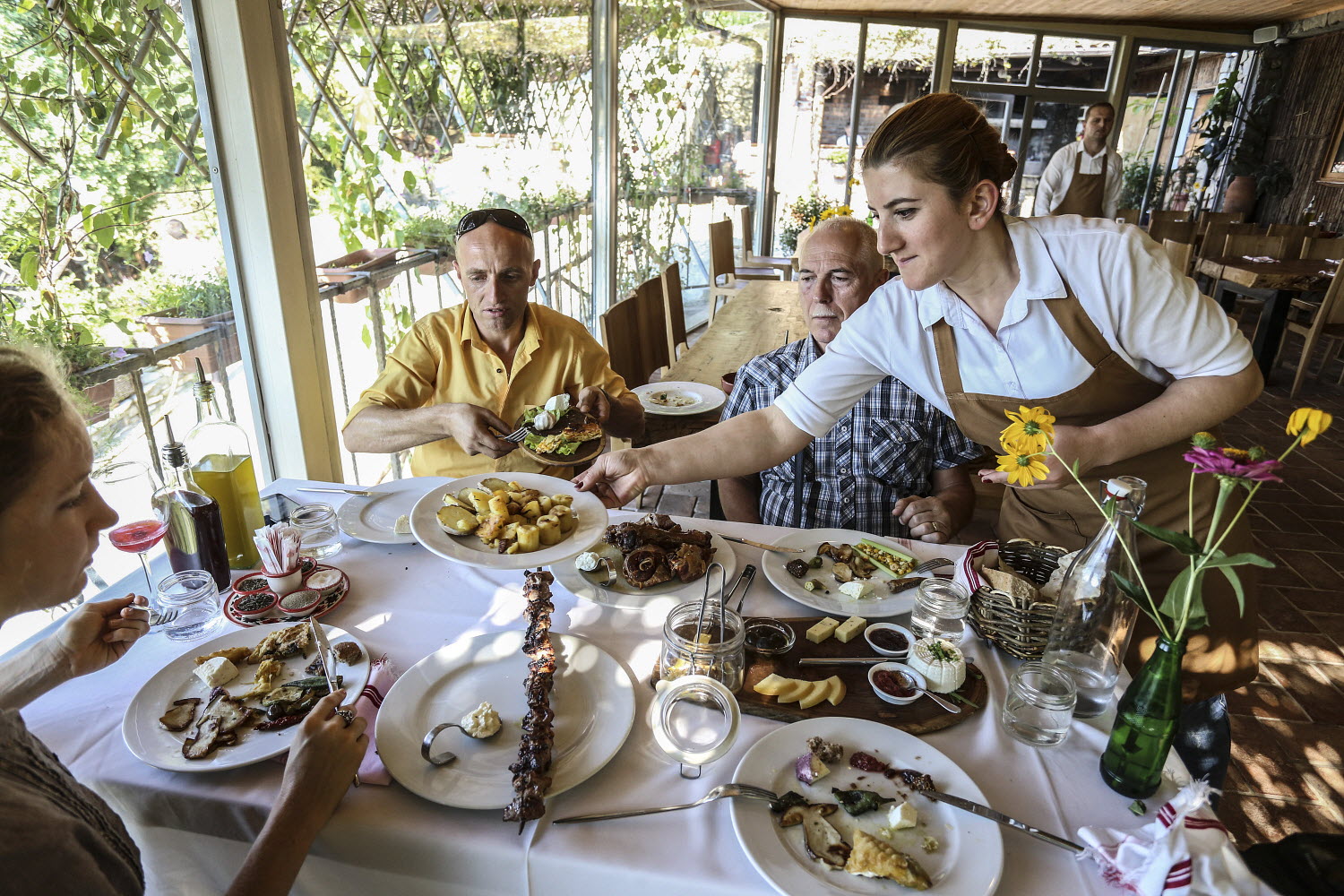Opportunities and challenges of eating local

Ahead of Sustainable Gastronomy Day (18 June), the European Bank for Reconstruction and Development (EBRD) and the Food and Agriculture Organization of the United Nations (FAO) have issued a new publication for hotels, restaurants and catering enterprises (HoReCa) on how best to source food from local suppliers.
Developed as part of EBRD/FAO joint efforts to support local small and medium agrifood enterprises and develop shorter, more sustainable agrifood supply chains in Eastern and Central Europe, Central Asia, and the Southern and Eastern Mediterranean., the publication reveals opportunities and challenges for the tourism sector of sourcing local food products and ingredients, and provides tips for buyers.
‘Eating local’ can bring many advantages, with fewer ‘food miles’, potentially positive impacts on local economies, and opportunities to boost traditional food cultures. But local sourcing also comes with challenges.
Small scale producers can struggle to adhere to food safety standards or deal with complex procurement systems. This can mean buyers may face obstacles with maintaining supplies and guaranteeing quality.
“Most EBRD countries of operations feature large agricultural sectors and can boast a range of potential landmark products that link into the local cultural heritage – including olive oil, wine, herbs, fruits and vegetables, and many others,” said Nemanja Grgic, Agribusiness Advisor, EBRD.
“With this new publication, FAO and the EBRD are helping food and hospitality businesses to develop stronger links with local producers. A potential spinoff of these links is the development of ‘food tourism’, with benefits for everyone in the economy, as well as the environment,” said Grgic.
Local = sustainable?
Local food essentially means food that is grown, harvested and distributed close to where it is consumed.
This can help lower the carbon footprint of food, by reducing the emissions related to transportation. It can also help to limit food loss and waste, with fewer intermediaries along the supply chain.
Other environmental benefits can include the preservation of biodiversity, where local agricultural and food products are produced with traditional methods that rely on a broader range of plant varieties or animal breeds.
“Local sourcing’ can imply fresher, seasonal, better-tasting, healthier, more traditional foods – in areas where there is an abundance of good local produce,” said Arianna Carità, Food Safety and Quality Management Specialist, FAO Investment Centre, co-author of the publication. “Yet it’s vital to ensure that these short value chains develop efficient, environmentally-friendly and socially-responsible methods – all the way from production to processing and distribution.”
From a business perspective, local food and ingredients can be attractive for the clients of the HoReCa sector. Tourists are often seeking more localized, authentic and unique experiences, starting with the food they consume. Having local food on the menu can boost tourism.
Other positive side effects include the creation of jobs – which can provide vital opportunities for youth to remain in rural areas.
Local sourcing – risk or opportunity?
While local sourcing can offer multiple benefits for HoReCa operators, it is not always easy to organize.
Challenges may include irregular or variable supply, inconsistent product labelling and packaging, and even potential food safety issues. Products which are seasonal or non-standardized may come with different delivery or refrigeration needs.
Local producers and smallholders may also need financial support or training to meet standards and requirements.
Recipes for success
"We recommend that businesses start small by setting up local sourcing systems, and stay creative," said Caroline de Broissia, Value Chain Specialist, FAO Investment Centre. “Developing relationships with trusted suppliers takes time – and capacity often needs to be strengthened to iron out issues. Branding and marketing strategies can be crafted to emphasize the local connection.”
Digital multiparty procurement tools or platforms managed by HoReCa can be used to administer sourcing and streamline logistics, while third-party companies can also help locate quality suppliers or manage distribution.
Other tips included in the publication include adapting menus to creatively capitalize on the benefits of seasonal and local food. Or marketing “culinary narratives” which tell food source stories, forging links between the clients of the HoReCa sector and local producers.
With the right investment, ‘going local’ can help the HoReCa sector to be part of supply chains which value quality, authenticity and sustainability – from field to plate.
Full document can be read here.
